Marianna's Blog
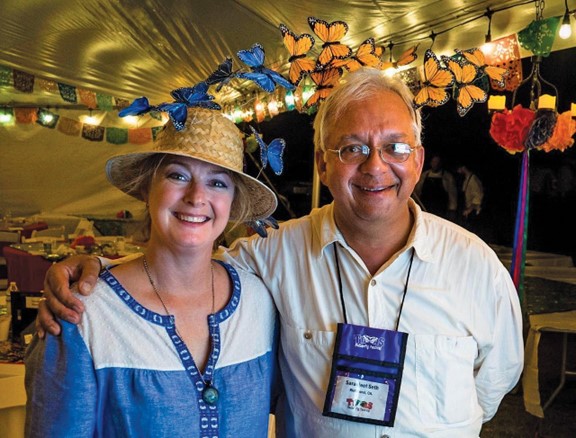
About the Texas Butterfly Festival: Sarab's Heart Song
A Guest Article on Marianna's Blog, from NBC member and volunteer at the University of California Botanical Garden at Berkeley, Sarab Seth
At my first Texas Butterfly Festival, by the time I arrived at the National Butterfly Center on Monday morning for the second of three field trips, I knew that I was going to be coming back every year. Part of it was the astonishing butterflies I had seen, not just on Sunday’s field trip but also just puttering around the Center on Saturday and Sunday. And part of it was the amazing group of people I had met both days, and the camaraderie among them.
That year, not knowing any better, I was only in the Lower Rio Grande Valley (LRGV) for four and a half days. But by the time I left, I already knew I had found a lifelong spiritual home. When I came here in 2017, I literally knew no one and nobody knew me. But over the next year, I kept in touch with several people I had met, and forged some friendships. And when I returned in 2018, I already felt like I was visiting my extended butterfly family. Those feelings have only deepened since then. And some of those friendships have blossomed into what I know will be lifelong friendships.
What I found exhilarating that first year was not just the butterflies I saw — 87 species, 64 of which were lifers; some truly beautiful ones, some truly rare ones — and the people I met, but also the whole experience of seeing those butterflies in the company of those people. There’s something very special about butterflying intensively all day for three days in groups of ten to twenty fellow enthusiasts, and then mingling every evening with roughly 100 of them. I had never had either experience before. (I imagine that’s true of most people who have not attended the Butterfly Festival or a NABA Biennial Members Meeting.)
On the night of the awards banquet at the 2017 Festival, I was innocently walking to get myself a little more food, when Marianna Treviño Wright, the outstanding and indomitable director of the National Butterfly Center, suddenly interrupted her speech to grab hold of me and bestow a Monarch headdress upon me. I felt like I had been knighted, but I had no idea why. Apparently, it had something to do with the fact that, at the evening receptions after the first two days of field trips, I was walking around all evening with a huge grin from ear to ear. It was obvious to one and all what a complete ball I had had each day.
The first field trip of my first festival still stands out in my mind as one of my most amazing butterfly experiences ever. I had signed up for the Coastal Specialties trip, led by Dan Jones, a local expert, and Barbara Volkle, a long-time festival participant and butterflier from Massachusetts. The official description ended with: “LONG PANTS, PROPER BOOTS AND PROTECTIVE CLOTHING/COVERING REQUIRED to contend with stinging pests, cactus and other hazards.” No other field trip came with dire upper-case warnings. When I reported for the field trip that morning, I found there were only two other people signed up! Barbara knew the other two attendees, and went around with them. I had the great pleasure of being taken around one-on-one by Dan all day. The two highlights for me that day were a Blue Metalmark at Resaca de la Palma (a reliable sighting there, most years, but they were few and far between in 2022), and a Xami Hairstreak at the Smiley Face Ball on Boca Chica Beach, where access is now often restricted by Elon Musk’s SpaceX private security team and operations.
I only came to realize later that 2017 was one of the best Festival years in recent memory (2022 was another stand-out year). At the time, I just took it for granted that experts like Dan Jones took you out to a site, and you came away seeing the target butterflies for that place. Xami Hairstreak is a perfect example. It’s always been a hit-or- miss butterfly, and has been difficult most years since 2017. I know a local person who’s been out to Smiley Face, one of the best spots, five or six times, and still hasn’t seen a Xami. But Dan Jones not only produced multiple Xamis that day, he also conjured up a mating pair.
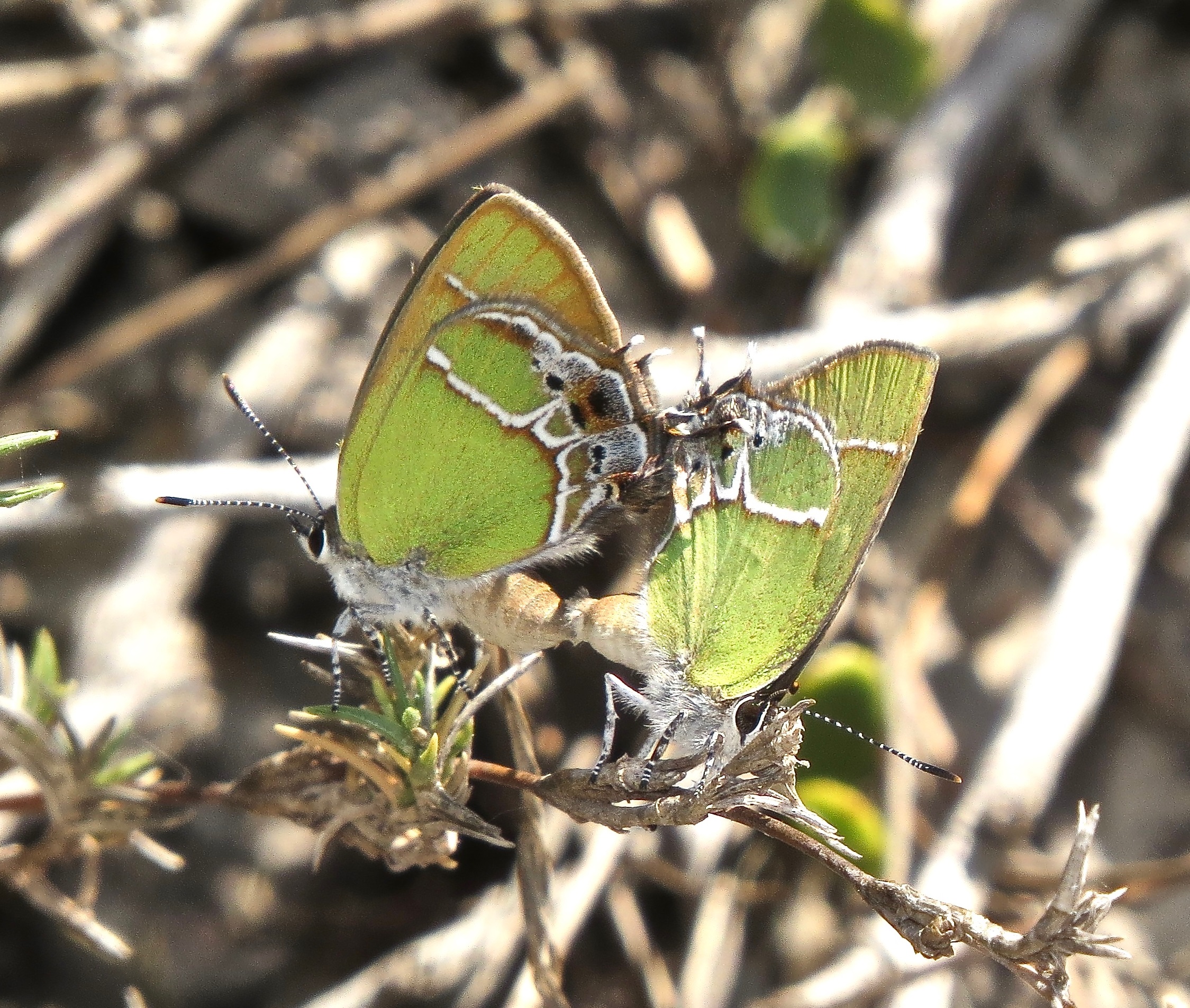 But given that this was my first visit to the LRGV, it wasn’t just about the less common butterflies for me. Of the 57 species I saw on that first field-trip day, at least 20 or 25 took my breath away. I was really delighted to photograph two butterflies that I had only seen in butterfly zoos till then: namely, Mexican Bluewing and Malachite. I discovered the beauty of a Mexican Bluewing’s underside for the first time. It is remarkably variable!
But given that this was my first visit to the LRGV, it wasn’t just about the less common butterflies for me. Of the 57 species I saw on that first field-trip day, at least 20 or 25 took my breath away. I was really delighted to photograph two butterflies that I had only seen in butterfly zoos till then: namely, Mexican Bluewing and Malachite. I discovered the beauty of a Mexican Bluewing’s underside for the first time. It is remarkably variable!
When the Festival ended, I wasn’t ready to quit. I returned to the Center on my last morning for a brief stop, and was able to photograph a Common Mestra, just 30 minutes before I had to leave for the airport.
Here’s one more experience from my inaugural 2017 Festival: I was hanging around the Retama Village wall late in the afternoon with local resident Joseph Connors IV, when he spotted a mating pair of Queens in poor light under a dense bush. Two males were trying to butt in as spoilers and they somehow ended up in this full-body-contact position right under the mating pair. (I’ve always felt that the motto of the butterfly photographer should be: “Take what you can gather from coincidence.” Especially in my case, since I take all my shots on a 1-second timer, to minimize camera shake.)
For me, the Texas Butterfly Festival experience is not just the three days of organized field trips you go on, but also the wonderful butterflying you do in the Center’s gardens every day, plus some butterflying along the Lower Rio Grande Valley (LRGV) Wildlife Conservation Corridor before and after the Festival. At that time of year, the butterflies are glorious up and down the Valley, which is why Festival field trips occur anywhere along a 125-mile corridor, from Falcon State Park beyond Roma, in the west, to Brownsville in the east, and countless places in between.
One of the highlights of the Festival field trips is the chance to visit private properties on which people have lovingly planted butterfly gardens (host as well as nectar plants). On some of these properties, which cannot be visited outside the Festival, you can easily clock 60 species in a couple of hours. (Last year, on a scouting trip for the Festival to one such property, three of us saw 55 species during a two hour visit. And that was on an overcast day, with the sun coming out only for only 5 minutes, if that.)
One of the keys to this outstanding kaleidoscope of butterflies is the crucita (Jack in the bush) that comes into bloom at the end of October. It is a real butterfly magnet. It not only draws in every-year beauties — and I would come every year just for those — but also rare strays that often blow in when there are strong winds from the south.
Even though 2017 was a great Festival year, since I was there for only four and a half days, I missed some butterflies that were standard sightings on subsequent trips. One of those was the love-at-first-sight Guava Skipper, which was a lifer for me in 2018. Another love-at-first-sight butterfly I enjoyed photographing in 2018 was the Red-bordered Pixie. I had a quick sighting in 2017, and came away with a record shot, but I got to photograph it properly only in 2018 and 2019. Sadly, this butterfly was badly affected by the big freeze in February 2021. There were no reported sightings in the LRGV at all in 2021, and only sporadic sightings in November- December 2022. Hopefully, it will be well- established again by the time of the 2023 Festival.
My second festival in 2018 was again a short trip, just seven days, since I had to leave for India as soon as the Festival ended (to organize my son’s wedding that December). After 64 lifers in 2017, I still picked up 18 more in 2018. That included Hermit Skipper, White-striped Longtail and Long-tailed Skipper. Long-tailed Skippers often show very good form, holding the body perfectly still while the wings accelerate for take-off. Theona Checkerspots were abundant that year (in 2022 too, but not in between).
Band-celled Sisters are fairly reliable at Resaca de La Palma State Park. In 2018, one was pretty high, well above our heads, which made it awkward to get a proper shot. But we were able to gently pull the branch down without spooking the butterfly.
Another butterfly I was delighted to see in 2018 was a Ruddy Daggerwing. I have had a soft spot for daggerwings ever since my very first day at the NBC in 2017. I had barely stepped through the Visitors’ Pavilion to enter the back gardens, when I saw people rushing in a hubbub to the back corner near the bird feeders. There were excited shouts back and forth: Many-banded Daggerwing. It turned out to be a really tattered individual, but I was still excited to see and photograph it. And I was delighted to note that when an exciting butterfly appears, even a complete newbie who doesn’t know a soul there, isn’t going to miss it. And I have seen this again and again over the years. Anytime a rare butterfly is seen, everyone at the Butterfly Center goes out of their way to make sure that even casual visitors get the word.
My 2019 trip was short again (another wedding in India, this time my nephew’s), and the weather conditions hadn’t been great leading up to the Festival. Butterflying that year was the slowest I’ve seen in the Valley in 5 trips. I picked up only 6 lifers. The first one was delightful, coming just 35 minutes after my flight landed at Harlingen. I picked up my rental car, drove to Hugh Ramsey Nature Park (a 7-minute drive), and stumbled upon a Brown-banded Skipper (page 12) five minutes after I walked into the park. Another beautiful lifer in 2019 was a Silver-banded Hairstreak. This butterfly is usually quite uncommon in the Valley, but in 2022 there was a beautiful one in the NBC Garden for several days (photo on page 7). Got my fill of photographing it then. Erichson’s White- skipper, Red-crescent Scrub-Hairstreak — at a private property — and Horace’s Duskywing were also lifers that year.
COVID robbed us of many things in 2020, including the Festival. When it resumed in 2021, it was the first time I was able to stay on for a while after the Festival ended. That year, I was in the Valley for 16 days. It wasn’t a banner butterfly year like 2017 and 2022, but I still managed to come home with 12 more lifers.
It was personally a very exciting trip for me, because I was closing in on 1000 species seen world-wide. I arrived in the Valley with my life list at 983. I was going to spend ten days in San Antonio after the Festival, so there was some chance of hitting 1000 before I got home, but I really didn’t fancy my chances at the outset. But then I picked up eight lifers through Day six. On Day ten, I got to 11.
Now I was at 994 with six days left in the Valley and ten days to follow in San Antonio, and I was starting to feel optimistic. But after three previous trips to the Valley, that initial rate of a lifer a day was just too hot a streak to sustain. There was a little weather, too. And I added only one more lifer in the Valley. I thought I had got another in San Antonio, but when I went to enter Brazilian Skipper to my list, I found I had already photographed it in Panama in 2019. So, I went home with my list at 995 (and reached 1000 only next June on the east coast).
One of the heartwarming things about the 2021 Festival for me was having total strangers, who were following my countdown to 1000 on Facebook, come up to me and wish me well.
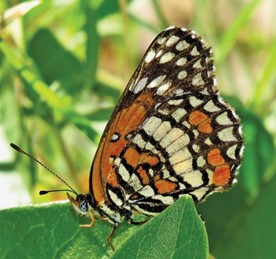 These were my 12 lifers in the Valley that year, in the sequence in which I saw them: Mexican Yellow, Reakirt’s Blue, Double- dotted Skipper, Common Sootywing, Coyote Cloudywing, Texas Powdered Skipper, Banded Patch, Marine Blue, Great Purple Hairstreak, Potrillo Skipper, Osca Skipper, and White Scrub-Hairstreak. The first four were in Dan Jones’ yard, the next four in Falcon Heights and Falcon State Park, the Great Purple Hairstreak was at the NBC, the Potrillo and Osca Skippers were on a second visit to Falcon State Park, and the White Scrub-Hairstreak was at Estero Llano Grande State Park in Weslaco. On Day one, I had photographed a Reakirt’s Blue at Edinburg Scenic Wetlands. Unfortunately, a Crab Spider had just turned it into lunch. I was so glad to see one again in Dan’s yard.
These were my 12 lifers in the Valley that year, in the sequence in which I saw them: Mexican Yellow, Reakirt’s Blue, Double- dotted Skipper, Common Sootywing, Coyote Cloudywing, Texas Powdered Skipper, Banded Patch, Marine Blue, Great Purple Hairstreak, Potrillo Skipper, Osca Skipper, and White Scrub-Hairstreak. The first four were in Dan Jones’ yard, the next four in Falcon Heights and Falcon State Park, the Great Purple Hairstreak was at the NBC, the Potrillo and Osca Skippers were on a second visit to Falcon State Park, and the White Scrub-Hairstreak was at Estero Llano Grande State Park in Weslaco. On Day one, I had photographed a Reakirt’s Blue at Edinburg Scenic Wetlands. Unfortunately, a Crab Spider had just turned it into lunch. I was so glad to see one again in Dan’s yard.
2022 was an exceptional butterfly year in the Valley. This time I spent 17 days there.
While I only added six lifers, that number is bound to dwindle each year. The best butterfly on that list was Clench’s Greenstreak, found at the NBC the day after the Festival ended by my good buddy, Joseph Connors IV. The others, in alphabetical order, were Curve-winged Metalmark, Gold-spotted Aguna, Rosita Patch, Viceroy, and Walker’s Metalmark. The aguna was seen at Falcon State Park, and the Walker’s Metalmark at a private property. The other three were all at the NBC. Curve-winged Metalmark has been extremely rare over the years, but was present in large numbers at the NBC last year.
I do want to underline the fact that you can find amazing new butterflies such as these even on your fourth or fifth trip to the Festival!
Here’s some of the other good stuff I saw in 2022. Clytie Ministreaks were unusually abundant at the NBC last year. A Pavon Emperor played to very appreciative audiences at the NBC for several days in a row. A croton bush in the NBC back gardens turned into Hairstreak Central for several days in a row after the Festival. Mallow Scrub-Hairstreaks and Lantana Scrub-Hairstreaks (some really pretty ones too! See photo on page 6) were there in force, along with Clytie Ministreaks, a Silver-banded Hairstreak, and a Great Purple Hairstreak. The last two stayed for several days. A Hermit Skipper hung around the Hackberry Trail for several days. I was very pleased to photograph two roosting sulphurs: White Angled-Sulphur and Statira Sulphur. I had seen both several times before, but never came away with a half-way decent photograph; and then I got both these photographs the same afternoon! Goatweed Leafwing is normally a tough sighting, but they were easily seen at the NBC last year. A multiple-day crowd-pleaser in the NBC back gardens was a Gray Cracker.
I hit another target in 2022. This was the first year that my trip-list exceeded 100 species (got to 114). In 2021, I stayed long enough to have a fighting chance at achieving this, but there just weren’t enough butterflies around that year. As you can see, every year is a bit different, which is why it’s so rewarding to keep coming back.
And now I want to share one of my favorite Texas Butterfly Festival stories. Linda Cooper, an expert and esteemed butterflier from Florida, has been one of the Festival guides for many years. Last year, on a slow day when nothing new had been seen, I found a nice fresh Zebra Heliconian in the NBC back gardens. Unfortunately, it landed only once, for all of five seconds. I got one quick shot, and it flew off. Several people came to look for it, but nobody found it again for an hour or so. Then, I was walking around with Linda. We reached a spot close to where I had seen it. I told her: *this* is where I saw it, and then it flew off *thataway*. She immediately walked me over 50 feet to the flowering Mexican Orchid tree outside the plant nursery fence. And 30 seconds later, damned if the Zebra Heliconian didn’t appear right there. (And that’s why Linda Cooper is one of the best darn butterfly guides at the Texas Butterfly Festival!)
Speaking of Linda, here’s another great story. For years, she has been an unofficial group photographer for the Festival. Anytime a butterfly draws a crowd, Linda will be there to photograph the group of admirers. Many of these photographs get posted to the NBC Facebook page, with alerts regarding the appearance of the special visitor. The crowd photographs are taken from the behind the group, since it wouldn’t do to get between the admirers and the butterfly, so all one sees are people’s backs and backsides. One year, someone sent in an impassioned plea to Marianna to stop posting photos of “people’s butts,” with a request that whomever was taking these pictures, which seemed to feature mostly human’s hats and hind ends, be asked to cut it out. The message was received loud and clear: More butterflies; fewer butterfliers’ butts, and proper adjustments have been made.
There are just two things I want to quickly add before I launch into the final chorus of my heart song. The food at the Festival dinners is always wonderful, but I never expected Mission-McAllen to offer all the really great food that it does. I look forward to Delia’s glorious tamales every trip. Last year I stumbled upon this outstanding taco place: Tacos el Plebe. But the real surprises were amazing Peruvian food at Mikhuna, and Korean food at Seoul House, as well as fine dining at The Patio on Guerra and España. Eating well has become an important part of my Festival experience!
And part of what makes the whole Texas Butterfly Festival experience so wonderful is the (rapidly running out of superlatives here!) supercalifragilistic staff that Marianna has assembled at the NBC. They work their hearts and souls out all year long, and then manage to find a higher gear at Festival time. I’m always amazed at how smoothly the Festival goes off year after year, with so many moving parts and potential pitfalls.
I do believe very strongly that the Texas Butterfly Festival is the most fun that butterfliers can legally have. I will keep coming back each year, for the butterflies certainly — and they never disappoint, even in the less spectacular years — but equally for the people. The ones I know and love from previous festivals, who I have looked forward to seeing again all year, and the new friends I know I will make that year.
I think how much the people meant to me was really brought home to me in 2020, when the Festival had to be canceled. I probably missed the people more than the butterflies.
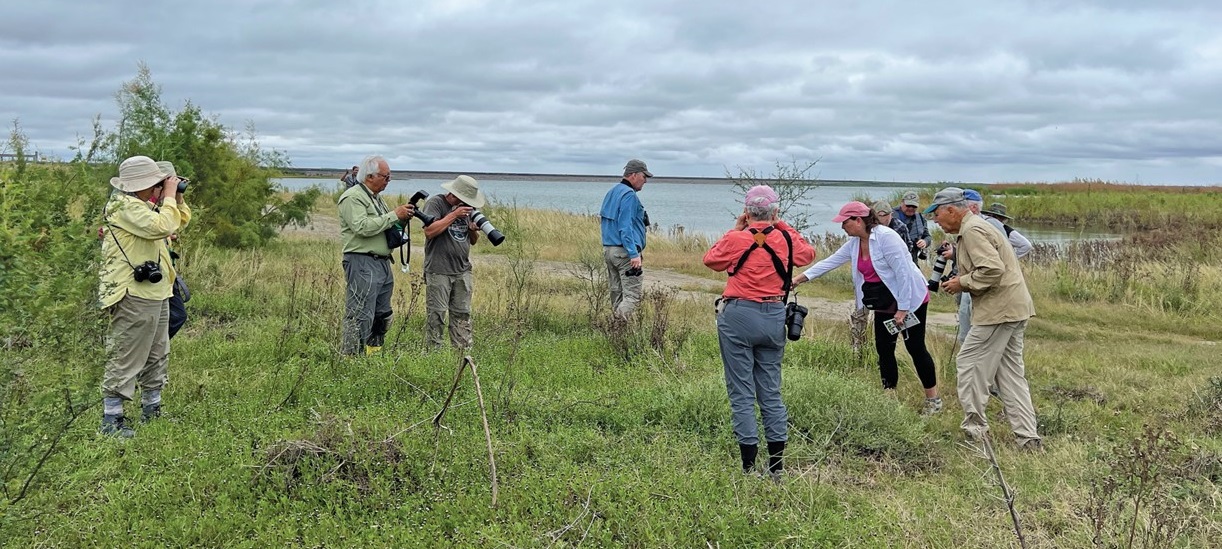 It took me three trips and a canceled Festival to frame it in words in my mind, but I knew it in my heart well before that — the Texas Butterfly Festival is not just an event, it’s also a community. A really warm, and tightly knit community of people who love and appreciate each other, and so look forward to reuniting every year. And all you have to do to join this community is love butterflies and show up for the Festival each year. And this whole wonderful community will embrace you, and hold you close, too.
It took me three trips and a canceled Festival to frame it in words in my mind, but I knew it in my heart well before that — the Texas Butterfly Festival is not just an event, it’s also a community. A really warm, and tightly knit community of people who love and appreciate each other, and so look forward to reuniting every year. And all you have to do to join this community is love butterflies and show up for the Festival each year. And this whole wonderful community will embrace you, and hold you close, too.
Coming to the Festival in 2017 was one of the best, happiest decisions of my entire life. In a very real sense, it has been life-changing for me, and has brought so much joy and richness into my life. I now consider the group of every-year Festival attendees to be my second family. And I plan to keep coming back as long as I’m physically capable of making the 2,000-mile trip from California.
So that’s my heart song! Thank you so much, Jeff and Marianna, for letting me sing it! I’m particularly glad that I’m getting to sing it to the people who wrote the song in my heart.
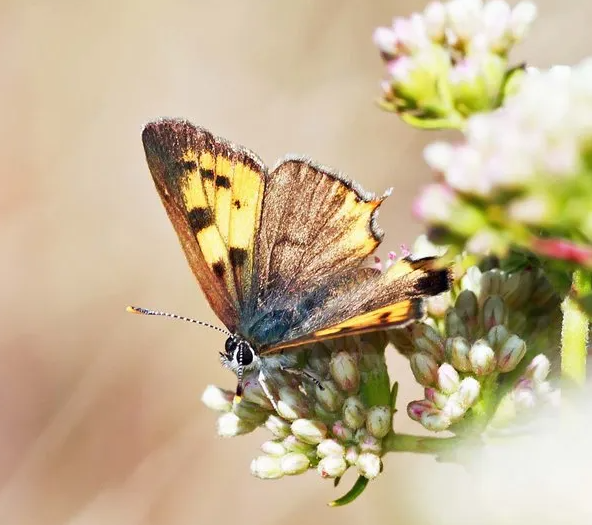
9 Butterflies that Need More than Monarchs
Lessons & Reflections from the National Butterfly Center
Last week, the curious inquiries and frenzied interview requests began to come in, again; only this time, it was about the butterflies. Specifically, an Associated Press article published on July 21 , 2022, with the headline, “Beloved monarch butterflies now listed as endangered,” seemed to have sparked a wave of reactionary alarm among reporters and butterfly enthusiasts, alike.
Without reading the article or perhaps understanding how the determination of species status works in the United States, many in the public and the press believed the beloved Monarch—a butterfly the U.S. Fish & Wildlife Service has considered listing—was now officially listed as Endangered. This is not the case.
The sensational headline actually referred to the decision by the International Union for the Conservation of Nature, an advocacy group based in Switzerland, to add the Monarch to their proprietary Red List of Threatened Species, as Endangered. While this action represents an escalation of concern for the migratory Monarch, it has no real world implications for the species and in no way affects the ways in which humans may relate to them, not only in the United States, but globally.
If the Monarch were to become federally-listed by the U.S. government, legal prohibitions and consequences for violating them would come into play. The new rules might restrict human handling of the species; ban their commercial breeding and sale; outlaw harvesting of Monarchs in any stage of their lifecycle for home raising by hobbiests; eliminate the use of lethal pesticides and selective herbicides, such as neonicotinoids and glyphosate; and more. These are just a few of the reasons why the species is not likely to be listed, domestically.
However, there is good news. Regardless of how dramatically overwintering population numbers of Monarchs may vary each year, the species remains “globally secure” (in as much as any species can be in the face of accelerating climate change). Still, there are at least nine, unique butterflies on the North American landscape that are critically imperiled—and only six of those have been listed as Endangered by the U.S. Fish & Wildlife Service. Those six recognized species are, in no particular order:
- Florida Leafwing,
- Miami Blue,
- Schaus’ Swallowtail,
- Bartram’s Scrub-Hairstreak,
- Hermes Copper, and
- Poweshiek Skipperling.
Four of those six are endemic to Florida, while one is from California, one is from the northern prairies of the Dakotas, and all are severely limited in range. Three more species that should be as Endangered by USFWS are:
- Zestos’ Skipper,
- Dakota Skipper,
- Manfreda Giant-Skipper.
The Dakota Skipper is native to the grassland prairies of southern Canada, to the Dakotas, and east to Minnesota and Wisconsin, similar to the range of the Poweshiek Skipperling; while the Manfreda Giant-Skipper is found only in South Texas and northern Mexico. Each of these species is now relegated to a few counties or a couple of colonies, while the Zesto’s Skipper has been extirpated in the U.S. altogether.
How does this happen?
Butterflies disappear from the landscape when their host plants disappear, undercutting their ability to reproduce, or when the adults die off, usually from environmental toxins or disease. Unlike the Monarch, whose range includes much of three continents, across which their host plant, milkweed, may be found in more than 100 varieties; most species have only one or two viable hosts, and these may be highly-localized or endemic to a limited region. As a result, habitat development or destruction in any given place that causes a reduction or elimination of host plants, is likely to turn up the heat on the sustainability of species.
In concerted and well-publicized campaigns to “save the monarchs,” organizations like the Monarch Joint Venture, (of which the North American Butterfly Association is a founding partner,) have encouraged people to plant milkweed in an effort to restore habitat and create healthy breeding grounds. Unfortunately, few are doing this for the lesser known species that are less iconic and less socially valued than the large, colorful and “courageous” Monarch, who makes a treacherous, transcontinental journey, akin to the mythological hero’s journey of figures we study, memorialize and celebrate…
If only we could anthropomorphize, adopt and advocate for every species on the North American landscape and work to support its survival!
The North American Butterfly Association is one of very few organizations actively engaged in habitat acquisition and restoration, environmental education and advocacy focused solely on creating healthy ecosystems to save all butterflies—not just the Monarch. In the Rio Grande Valley, we’ve launched rare plant surveys, conducted soil samples, attempted propagation of host plants and even acquired land in permanent conservation easement to preserve and enhance habitat for the rarest butterfly in Texas, the Manfreda Giant-Skipper. Our Florida Butterfly Movement is doing the same thing for the endangered pine rocklands habitat, in order to provide for the endangered Miami Blue, Bartram’s Scrub-Hairstreak and Florida Leafwing.
No other organization is working diligently, as we are, to strategically identify, possess and revegetate critical land mass to save these unsung heroes, to whom our survival is intimately tied.
There are many reason’s NABA’s slogan says, “If we can save the butterflies, we can save ourselves.” We invite you to learn more about this and about our important projects in Texas and Florida, and encourage you to form a NABA chapter where none exists, so we may advance our mission in other places, like the northern plains and southern California, for the Poweshiek Skipperling and the Hermes Copper.
For the Monarch and for all humankind, we beseech you to fall in love with all of the butterflies, and join us in creating a patchwork of prairies, gardens and forests that is beneficial and blooming, for all.
PHOTO CREDIT: Hermes Copper by Ken WIlson



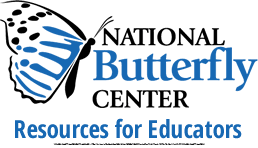



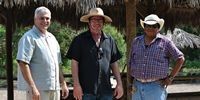
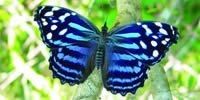
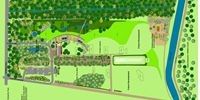
 Media
Media